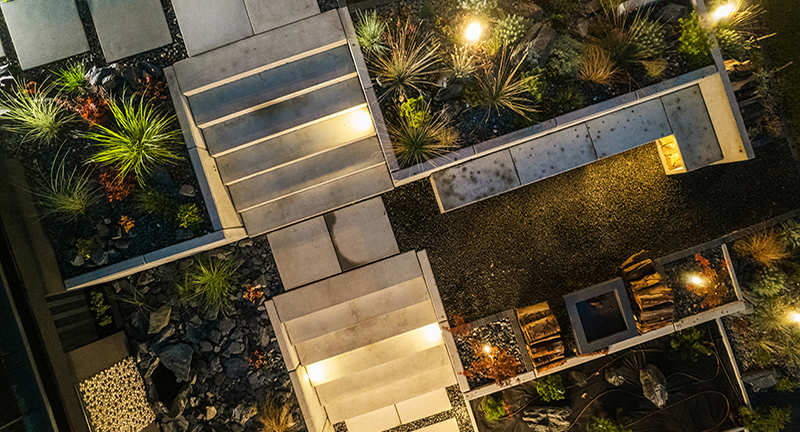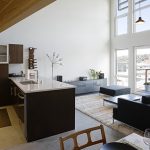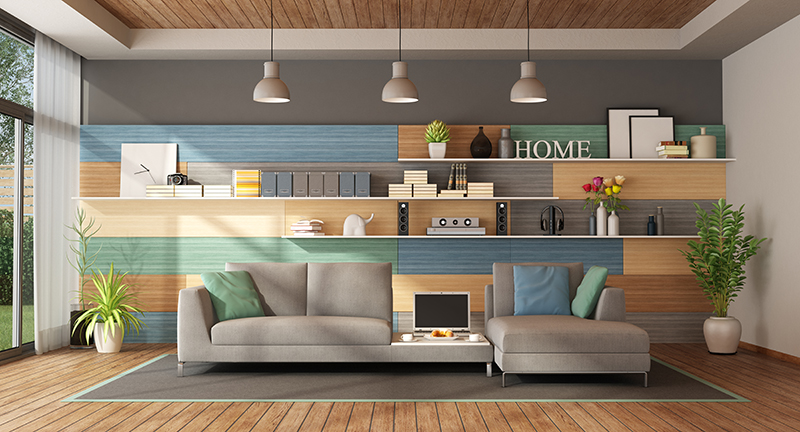Biophilic Architecture: Connecting Nature with Living Spaces
In recent years, the growing disconnect between people and nature has brought attention to a design concept that bridges this gap—biophilic architecture. This approach integrates natural elements into built environments, encouraging a deeper connection between humans and their surroundings. For cities like Jalandhar, where urbanization is expanding rapidly, integrating biophilic principles into architecture is not just an aesthetic choice but a necessity.
At Hothico Architects, the focus has consistently been on creating designs that do more than just house people—they seek to nourish their well-being. Through thoughtful planning, natural material usage, and a sensitivity to environmental context, Hothico Architects has implemented biophilic principles across a wide range of residential and commercial projects.
In this blog post, we’ll explore what biophilic architecture means, its core principles, benefits, and how firms like Hothico Architects are implementing it in real-world projects.
What is Biophilic Architecture?
Biophilic architecture is based on the idea that humans have an innate desire to connect with nature. This connection is not only emotional but also physiological, affecting mood, productivity, and overall well-being. The term “biophilia” was popularized by biologist Edward O. Wilson, who argued that humans are biologically inclined to seek interactions with the natural world.
Biophilic architecture, therefore, goes beyond simply adding plants or green walls to buildings. It integrates natural systems, patterns, and processes into the design itself. The goal is to make nature an essential component of the living or working experience—whether through views of green spaces, daylight, natural ventilation, materials, or even the way a space feels.
Core Principles of Biophilic Design
For biophilic architecture to be successful, it must incorporate certain key principles that allow for meaningful interaction with nature. These principles include:
-
Direct Nature Experiences
This includes visible greenery, water features, natural light, ventilation, and the presence of plants and animals. At Hothico Architects, many projects integrate central courtyards, rooftop gardens, and semi-open terraces that allow residents to experience nature directly. -
Indirect Nature Experiences
These are nature-inspired design cues such as organic shapes, natural materials like wood and stone, earthy color palettes, and even sounds of water or birds. Interiors that reflect natural patterns or rhythms create a subconscious link with the environment. -
Space and Place
Biophilic design takes into account the unique context of the location. It enhances the sense of belonging and community by using locally-sourced materials and reflecting regional landscapes. Hothico Architects emphasizes designing according to the local climate and geography, ensuring sustainability and comfort. -
Natural Systems Awareness
This involves understanding the site’s ecological makeup and creating systems that are symbiotic with it. Features like rainwater harvesting, natural drainage, and passive cooling systems are incorporated without disturbing the existing ecosystem.
Benefits of Biophilic Architecture
Biophilic architecture isn’t just about aesthetics; it offers measurable benefits that improve quality of life. Let’s look at a few major ones:
1. Health and Well-being
Natural light, fresh air, and access to green spaces significantly impact physical and mental health. Studies have shown that exposure to natural environments can reduce blood pressure, improve sleep, and decrease stress levels. Hothico Architects often designs spaces with large windows, atriums, and green patches that promote circulation and natural light, making homes healthier to live in.
2. Productivity and Cognitive Function
In offices or study environments, biophilic design has been linked to improved concentration and creativity. Green spaces in the workplace lead to higher job satisfaction and reduced absenteeism. Even in residential settings, such as home offices or reading nooks, views of gardens or indoor greenery help users stay focused.
3. Energy Efficiency
Biophilic architecture often leverages passive design strategies. Orientation, natural ventilation, thermal mass, and shading are thoughtfully integrated to reduce energy consumption. Hothico Architects frequently designs buildings with cross ventilation, skylights, and thermal insulation to reduce reliance on artificial cooling or lighting.
4. Environmental Sustainability
By incorporating local materials and respecting natural landforms, biophilic architecture reduces the carbon footprint of construction. Additionally, native vegetation used in landscaping requires less maintenance and water, preserving ecological balance.
Real-World Applications by Hothico Architects
Across multiple projects in Punjab and other parts of India, Hothico Architects has embraced biophilic principles to create meaningful, healthy spaces. Here are a few strategies and features they’ve incorporated:
Residential Courtyards
In many residential layouts, Hothico Architects reintroduces the traditional Indian courtyard, which serves as the green heart of the home. These courtyards allow light and air to circulate while offering a calm, shaded retreat. They serve multiple purposes: a space for gatherings, yoga, or even urban farming.
Green Balconies and Terraces
Given the rise in apartment living, private gardens can be challenging. Hothico addresses this through spacious balconies that act as green extensions of the indoor space. With proper drainage, soil layering, and sun analysis, these balconies can support vertical gardens or potted trees.
Water Integration
Water bodies such as small ponds, channels, or fountains are often placed within or near buildings to provide cooling and acoustic comfort. These features also attract birds and insects, contributing to the biodiversity of the area.
Use of Natural Materials
Local stone, reclaimed wood, lime plaster, and terracotta tiles are not just sustainable—they create a tactile and visual connection to nature. Interiors are designed to be breathable, reducing the need for artificial air-conditioning or humidity control.
Passive Cooling Design
Biophilic architecture is often associated with energy efficiency. Projects by Hothico Architects frequently use shading devices, thick insulated walls, and strategic openings to control heat gain and loss naturally. This not only keeps the home cool in summer and warm in winter but also reduces utility bills.
Challenges in Implementation
Despite its benefits, biophilic design comes with its challenges, especially in urban environments:
-
Space Limitations
Densely built cities may not allow large green spaces or open courtyards. However, creative vertical gardening, green rooftops, and internal green pockets can make up for the lack of horizontal space. -
Maintenance Requirements
Living elements like plants and water features need regular care. Hothico Architects ensures their clients are guided with low-maintenance plant selections and automatic irrigation setups to make this process easier. -
Cost Considerations
Initially, incorporating biophilic elements might seem more expensive. But over time, the benefits in terms of energy savings and improved well-being provide a strong return on investment.
Future of Biophilic Architecture
As climate change and urban stressors increase, biophilic architecture is no longer just an option—it’s becoming a standard for responsible design. Architects, developers, and homeowners are recognizing the long-term value of spaces that are more than just livable—they’re regenerative.
Smart cities and eco-communities are now being planned with green infrastructure at their core. Public spaces, transportation hubs, hospitals, and schools are starting to adopt biophilic principles to create healthier communities. At the heart of this shift is the understanding that buildings are not isolated entities; they are part of a larger ecosystem.
Hothico Architects continues to evolve its design language by combining traditional wisdom with modern technologies. Whether it’s a luxury villa or a compact urban home, their commitment to human-centered, environmentally responsive design makes them a pioneer in biophilic architecture.
How You Can Embrace Biophilic Design at Home
You don’t need to undertake a complete renovation to bring biophilic principles into your home. Here are a few simple ideas inspired by Hothico Architects’ work:
-
Add indoor plants that suit your lighting conditions.
-
Use natural materials like jute, cotton, bamboo, or wood in your furnishings.
-
Place furniture to maximize daylight exposure and outdoor views.
-
Use water elements such as tabletop fountains for sensory comfort.
-
Introduce nature-inspired textures, patterns, and artwork.
Conclusion
Biophilic architecture offers more than just design innovation—it provides a way to reconnect with the natural world that sustains us. In doing so, it improves our health, our mood, and the sustainability of the spaces we live and work in.
Firms like Hothico Architects demonstrate that nature and modern living don’t have to exist in conflict. Through careful design, contextual understanding, and a genuine commitment to human well-being, they show that we can build spaces that breathe, evolve, and harmonize with the environment.
As more people seek meaningful living experiences, biophilic design will likely shape the future of architecture. It is a future where cities are greener, buildings are smarter, and people are healthier—thanks to a simple, yet profound, reconnection with nature.






